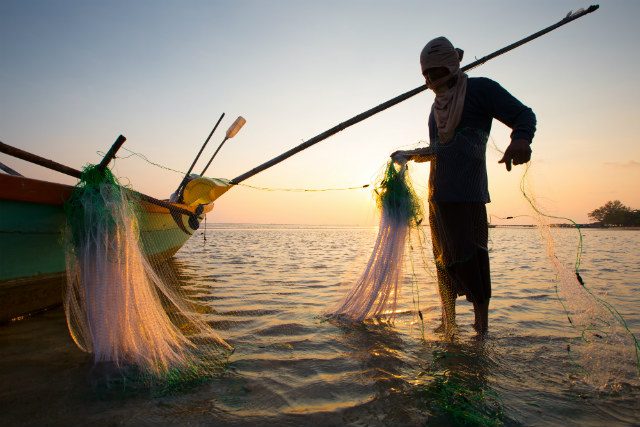SUMMARY
This is AI generated summarization, which may have errors. For context, always refer to the full article.

MANILA, Philippines – Allowing commercial fishing vessels inside municipal waters would endanger the future of municipal fisheries, the director of the University of the Philippines Marine Science Institute (UP MSI) said on Friday, September 8.
Marine scientist Laura David was referring to the movement of fish in the sea and the dispersal of their eggs, which would be disrupted if big fishers are allowed in municipal waters, defined under the law as 15 kilometers from the shoreline.
David explained during a media training in Pasig City that coral and fish larvae leapfrog or travel “from one reef to the next reef” and through time creates “connectivity.” David told Rappler it is important to maintain the integrity of the connectivity of reefs as sinks and sources of reef larvae.
“Kapag napigilan mo ‘yun, anywhere, ma-co-compromise ang lahat ng succeeding sa flow.” (If you disrupt that, all succeeding elements in that flow will be compromised.)
“‘Pag pinapasok mo na sila…maapektuhan mo na ‘yung future ng municipal fisheries. So okay na may buffer ka na municipal waters ay up to 15 kilometers.” (If you let commercial fishers enter, they will affect the future of fisheries. That’s why it’s better to have a buffer of at least 15 kilometers.)
On top of the harmful effect on the ecosystem, David also said small-scale fisherfolk and their families rely on municipal waters for income and food.
Under the Philippine Fisheries Code of 1998, only small-scale and artisanal fishers can fish within 15 kilometers of municipal waters from the shoreline. Commercial fishers are only allowed to fish beyond that boundary.
President Ferdinand Marcos Jr. is seeking the amendment of the fisheries code to combat illegal and unreported fishing.
However, one of the amendments being floated is to allow commercial fishing vessels within the 15-kilometer boundary. According to David, fishing companies had been lobbying for this.
The UP MSI director shared that they were also being consulted about the amendments. “Marine scientists are supportive of retaining the 15 kilometers,” she told Rappler.
Environmental groups are opposed to the proposal, and had called out the government for not holding enough consultations with civil society organizations on the matter.
‘Go further out’
There are ongoing tensions in some local governments where commercial fishers are defying the borders set under the law, said UP Visayas political science professor Rosalie Arcala Hall.
Commercial fishers should just “go further out” rather than operate in waters that provide livelihood for small-scale fisher, said Hall in the same event on Friday.
“Maybe we have to think seriously and strategize what kind of subsidy or support we can give to [commercial fishers] so they can be incentivized to fish [further out],” Hall said in a mix of Filipino and English.
Aside from saving fisherfolk’s livelihood, incentivizing commercial fishers to go further could help establish the Philippines’ presence at sea, added Hall.
“The fisheries [sector] is an important component of our strategic end goal of really establishing a footprint. We can say, ‘We’re here. Our fisherfolk are fishing in the area,’” she said. – Rappler.com
Add a comment
How does this make you feel?










There are no comments yet. Add your comment to start the conversation.